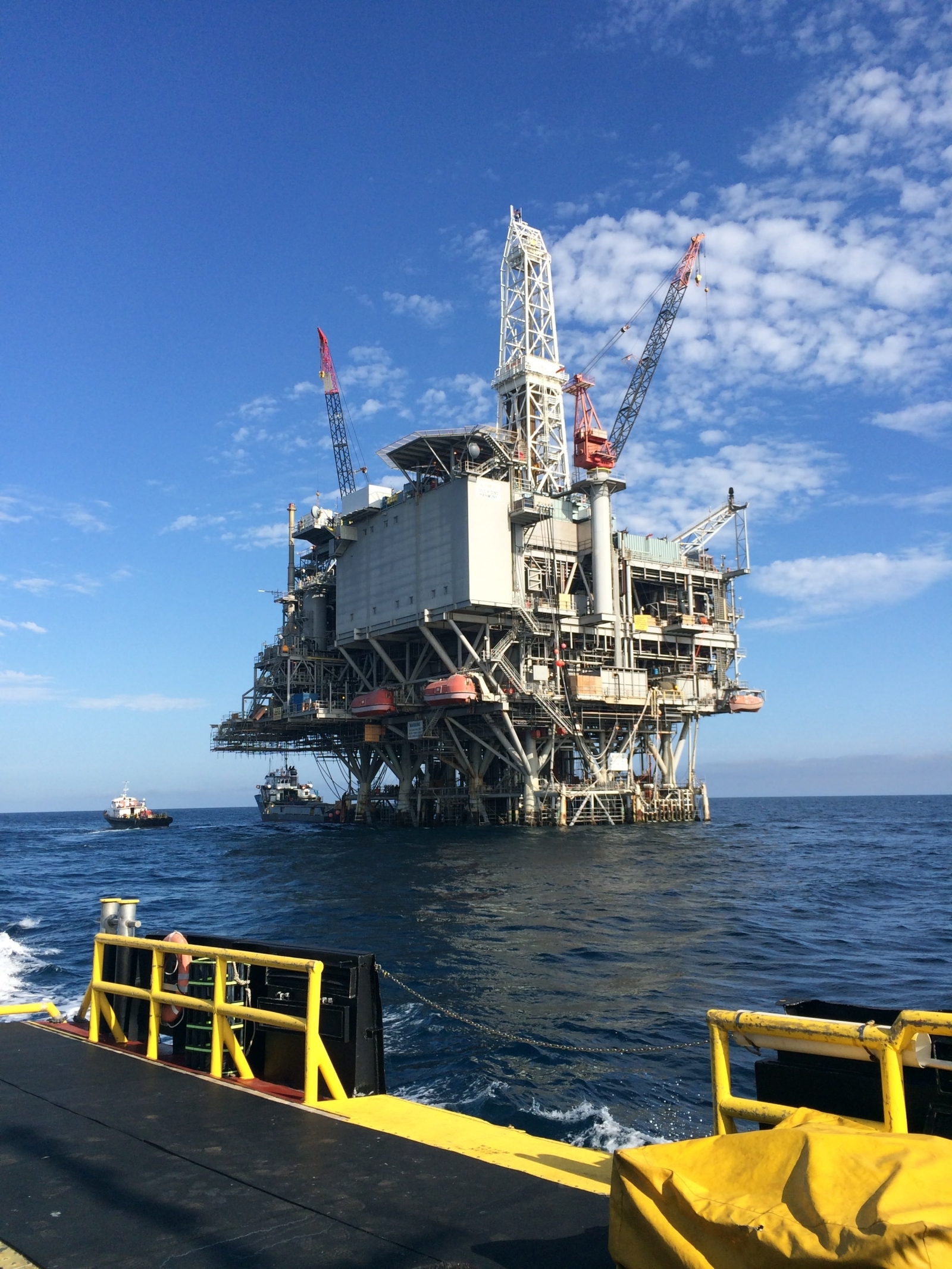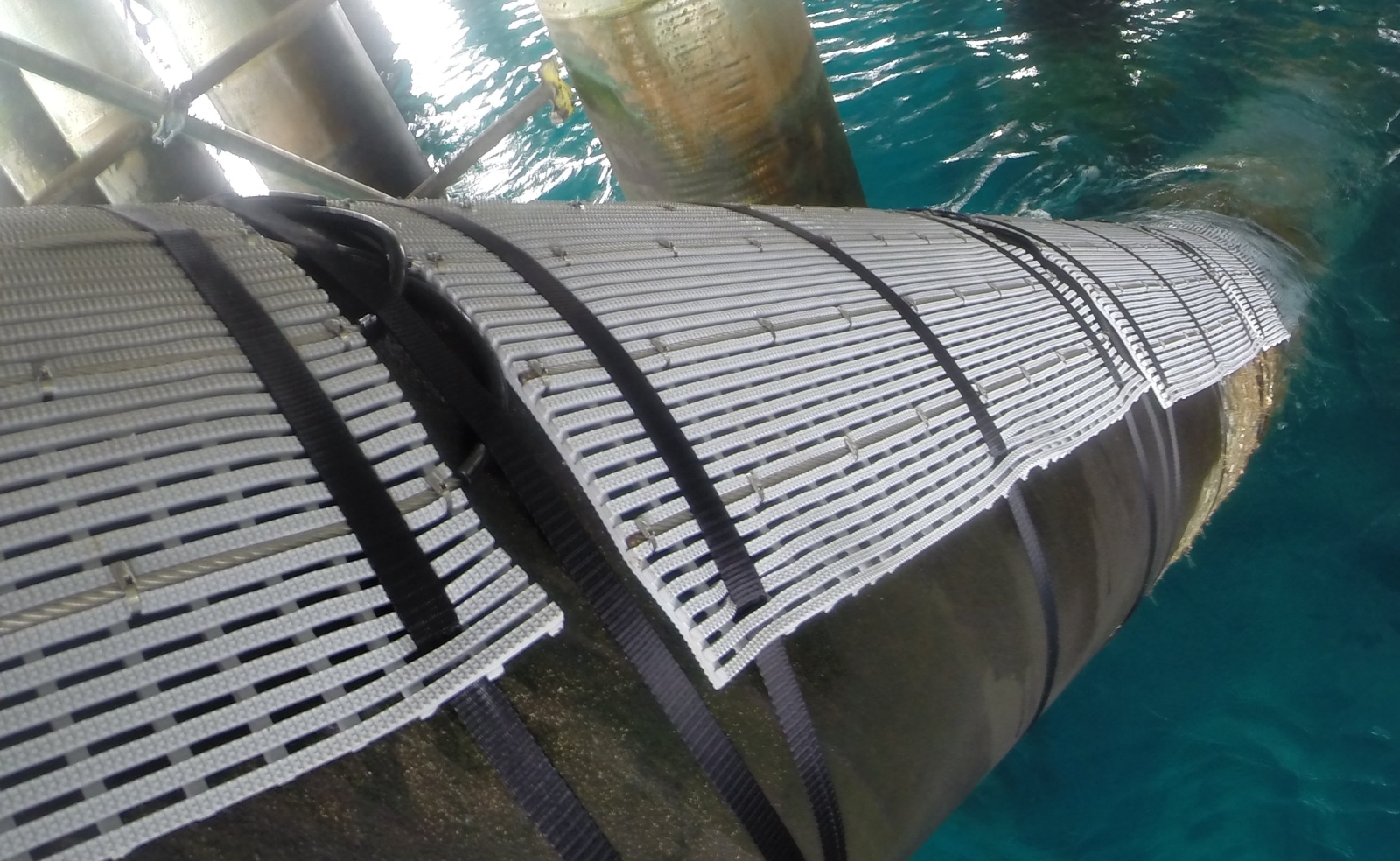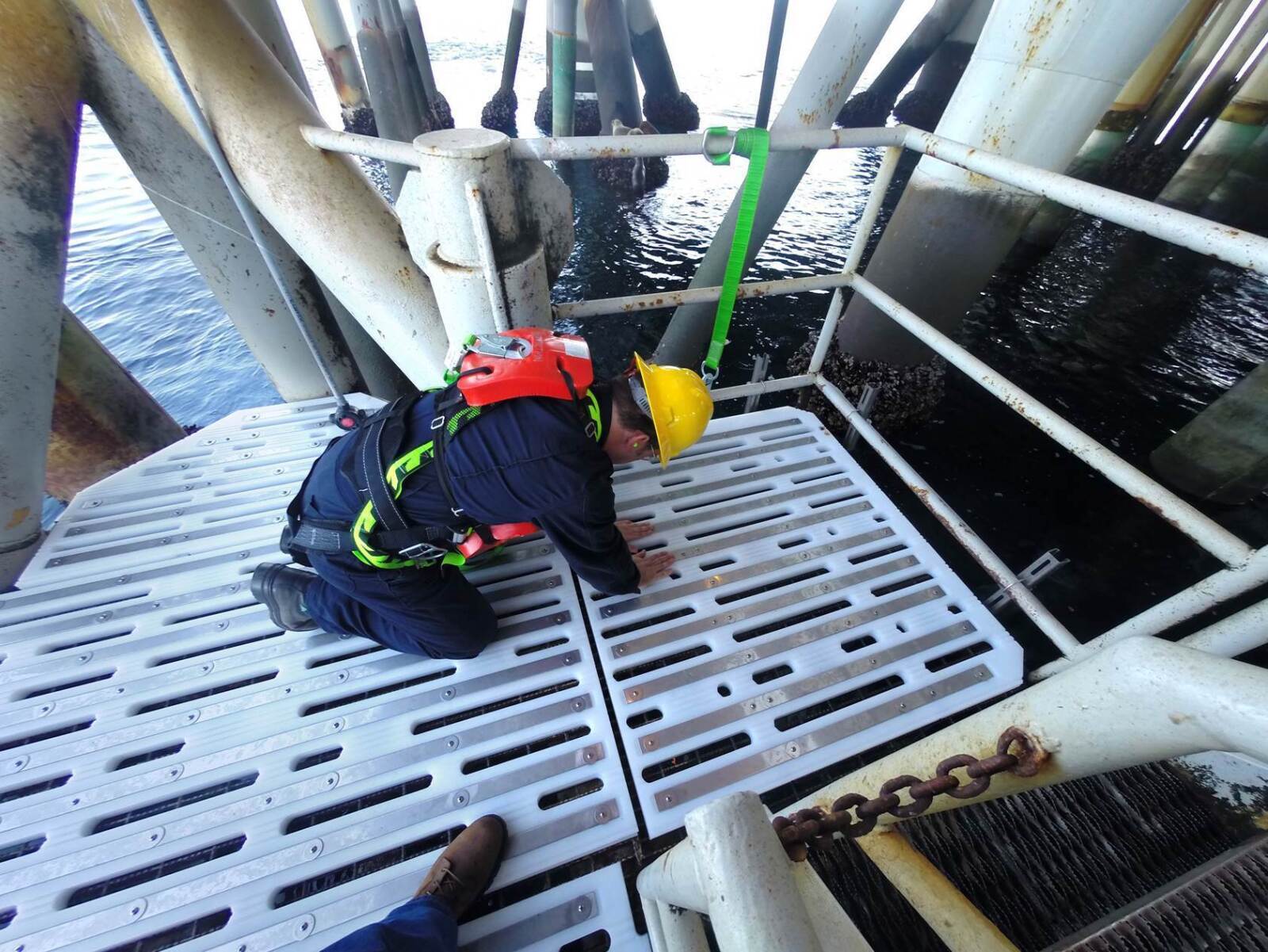Smith-Root Staff
Friday, April 03, 2015
In January 2014, ExxonMobil, a large, global oil company, contacted Smith-Root with a problem that required a quick solution. Construction was to commence fall 2014 on an existing oil production platform in the Santa Barbara Channel in southern California. An analysis determined that the construction noise could potentially damage the hearing of California sea lions (Zalophus californianus) near the platform. California sea lions are a protected species under the Marine Mammal Protection Act of 1972, and 100 or more individuals regularly haul out onto the platform’s support structure. Smith-Root was asked to help prevent sea lion injury by using electrical deterrence technology to deter the sea lions from hauling out onto the platform.
Relying on our previous research on sea lion deterrence, Smith-Root engineers designed a Pinniped Deterrence System that meets strict safety parameters. The system applies a very low voltage direct current (DC) pulse to a temporary, removable array with electrodes spaced about 4 inches apart. Two different types of base mats were developed: a stiff polyethylene (PE) base to be secured to flat surfaces; and a flexible polyvinyl chloride (PVC) mat able to be secured to curved surfaces. Both bases separate the electrodes from the steel platform structure to keep the DC pulse from being transmitted to the structure. Both types of bases allow free drainage of seawater and rainwater. The system is entirely self-contained; the mats are connected to pulse-generating control boxes that draw power from a deep-cell battery that is charged by solar panels. Therefore, the system is completely independent and doesn’t need to be “plugged in” to an electrical power source.

One major design challenge was the approximately 8.5 foot tidal range at the platform. Smith-Root designed 3-foot long mat sections in the tidal zone that were sequenced to power down when underwater to save battery power. The mats immediately above the tidal zone operated continuously, so if sea lions tried to access the higher mats they were subsequently deterred.

After receiving UL Certification, 147 flexible PVC mats, 8 horizontal PE base mats, and the control units were fabricated at Smith-Root headquarters in Vancouver, Washington. The complete Pinniped Deterrence System was deployed on the platform in July 2014, just 6 months after receiving initial contact about the needed solution.
The system was tested then operated during the construction period, July through October 2014. The system was 100% effective in preventing sea lions from hauling out onto the platform structure. Fewer sea lions were observed in the vicinity of the platform during this period; it is surmised that many individuals opted to go elsewhere because of the lack of opportunity to haul out of the water. ExxonMobil completed construction at the platform in October 2014 with no injuries to California sea lions.